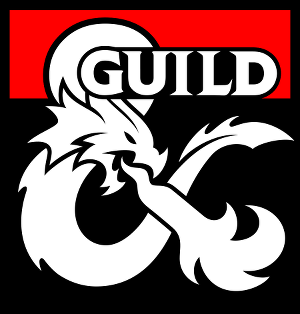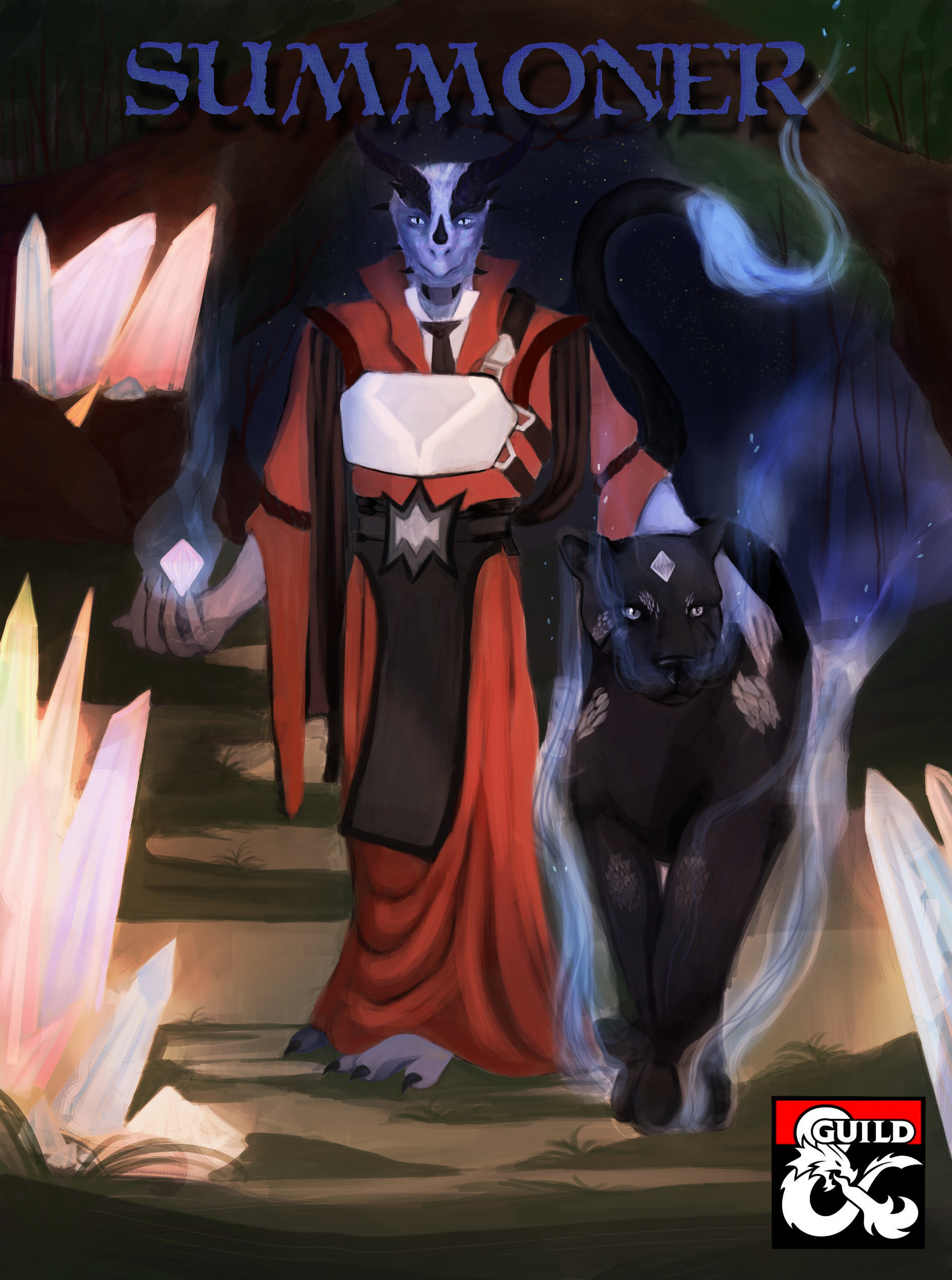Designer Notes on the Fate Seeker
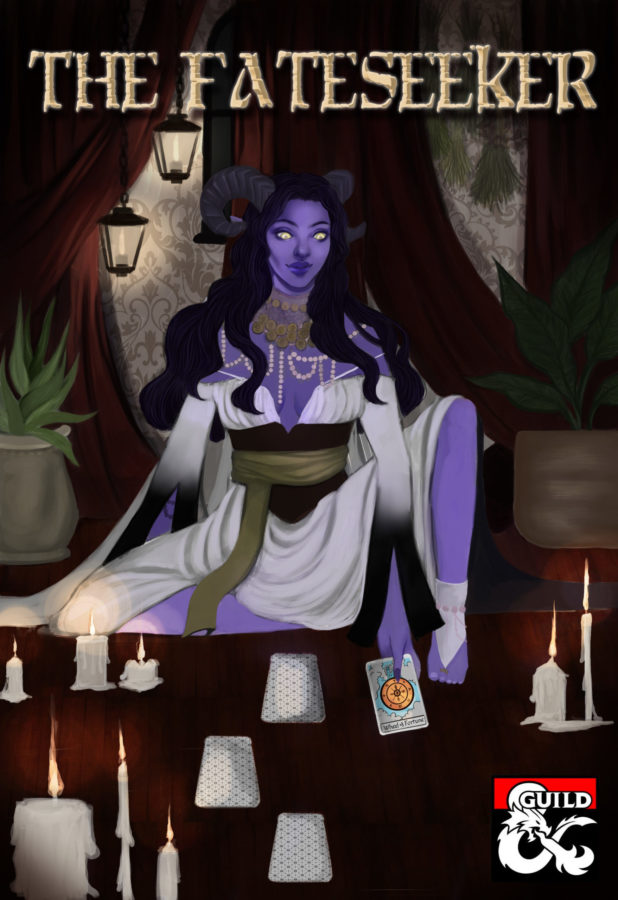
As already mentioned in the announcement of the Fate-Seeker, we want to give some insights into the origin of this class and its mechanics.
I like random components. The unexpected not only offers a certain twist, but also possibilities to make lemonade out of a lemon.
Writing a class with such a component made me think back to FFXIV. There I played an Astrologian for a while. The possibility to use cards to support your comrades besides healing magic sounded very suitable for Dungeons and Dragons.
The cards of the Fate-Seeker
So it was clear that the class should revolve around drawing cards.
Drawing of cards
The Fate-Seeker class can draw a multiple number of cards per day. Similar to Sorcery Points, the amount of these actions increases with the level. When a card is drawn, a d6 is rolled (or a corresponding card from a deck at the table, such as the Tarokka Deck) and the effect of the card can now be cast on a creature within 60 ft. The effect will last a number of rounds depending on the wisdom modifier. Drawing a card is an action.
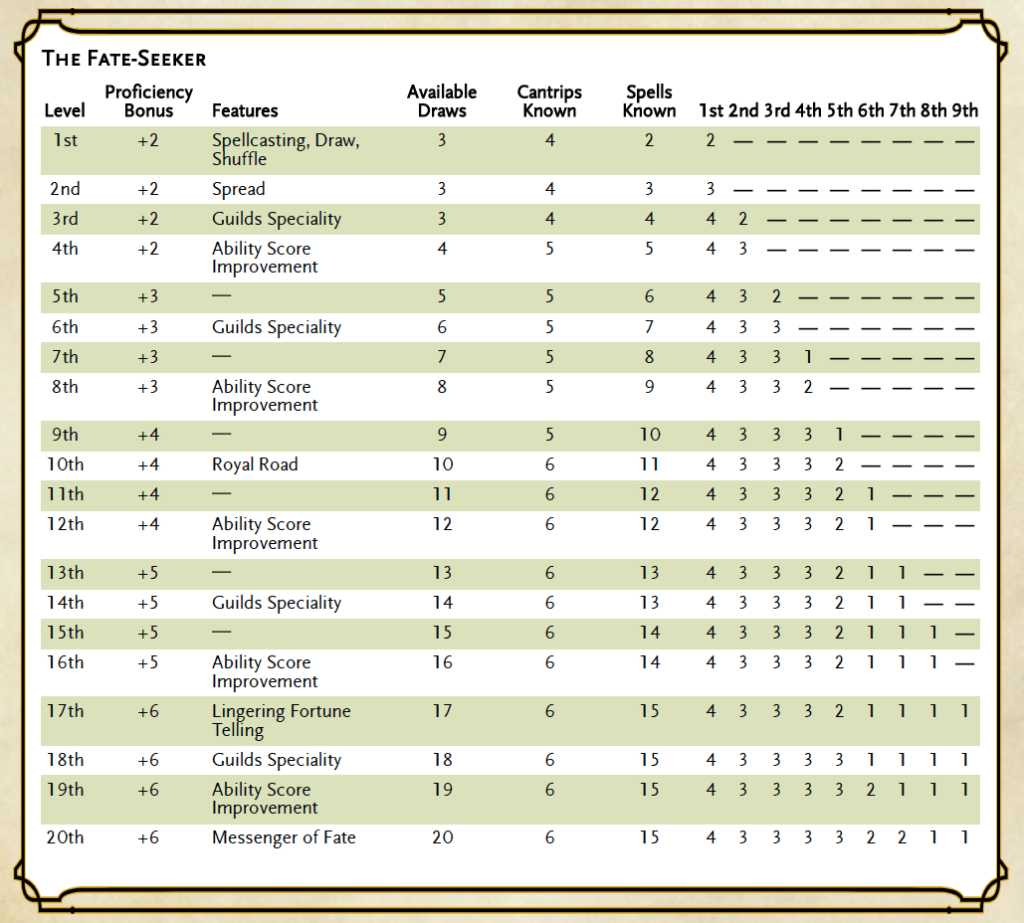
The card effects range from 1d6 bonus damage on all damage effects, to advantage on checks and saving throws with strength or dexterity to the target regaining a 1st or 2nd level spell level.
The idea was to have something for as many situations or companions as possible that is applicable and useful within a fight, but also outside the fight in situations of exploration or confrontation with social situations.
However, since some effects can be misleading (e.g. what is a non-spell slot expendable resource?), there is a small table for explanation.
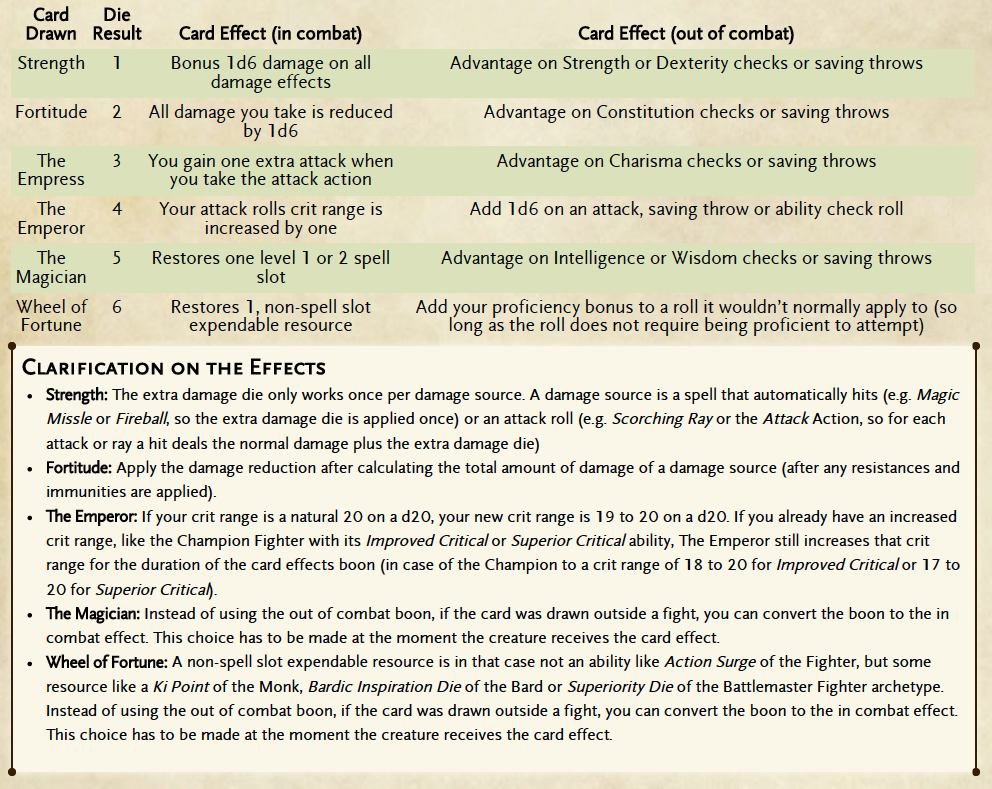
Shuffling cards
Now, of course, in a role playing game it is not an advantage for a player to give luck the complete admission. Planning social interactions, solving problems or the fight itself, should still be possible and not be left completely to chance.
In return, the class at level 1 is given the opportunity to shuffle back a card drawn as a bonus action and draw a new card. Shuffling and drawing a new card does not count as an additional action to the available cards that can be drawn during the day. However, you can only shuffle up to the Wisdom modifier. After that, a long rest is necessary to shuffle cards.
The limitation of shuffling to a maximum of five times a day ensures that you don’t have to shuffle cards all the time in your turn and then hope to draw the right card. Testing your luck should still remain a core part of the class to a certain extent, and thus the attraction for the players ;-).
Side Deck
Maybe you want to spread the luck a little bit further and make it more controllable. In return, the Fate-Seeker class from level 2 on gets the possibility to build a side deck. After a card is drawn, the card drawn can be placed in the side deck as a bonus action. The side deck can contain up to three cards.
As a bonus action in another turn, a card can now be drawn from the side deck. This of course now allows you to play two cards at the same time. Once as a bonus action from the side deck and as an action from the main deck. However, you should be aware that the more cards in the side deck, the higher the cost of drawing a card from the side deck. You can collect up to three cards, but drawing the first card costs one of the cards you are allowed to draw during the day, but the second card costs two cards and the third card costs three cards.
So there is a price to pay for placing the cards in your side deck already prepared. With higher levels and skills of the Fate Seeker this is of course possible, but a potentially expensive undertaking. However, the first card in the side deck is cost neutral and therefore a small preparation for a special situation.
Reinforcement of cards
Starting at level 10, a Fate Seeker has the ability to reinforce a card drawn. The original effects of the cards could weaken after the 10th level, so this feature should offer the possibility to make the cards more attractive for the game in Tier 3 and 4.

When a card is drawn, the player can decide to draw another card, which reinforces the first card drawn. The amplification effect depends on the second card drawn.
This way you can see which card represents the core effect (card drawn first) and can then decide whether you want to give up another resource (the drawing of a card) in the same action to further strengthen the card already drawn. Since no further action or bonus action is required, you can also place the card reinforced in this way in your side deck and keep it for later.
Archetypes
The three archetypes are specialized in healing, offensive magic and conditional effects. The general spell list of a Fate-Seeker consists of a mix of clerical, druidic and arcane spells with a strong focus on clerical spells.
Scholars of the Library of Luna gives even more access to spells from the arcane spelllists such as Fireball and Hypnotic Pattern and multiple invisibility per day for the Fate-Seeker.
As an apprentice of the House of Sol is characterized by helpfulness and life. Healing spells are strengthened and provide a lasting healing effect for a number of rounds of 1 + half your wisdom modifier.
The Road of the Astrum has brought about an exciting change in design. Followers of the Road of the Astrum can not only use the cards they draw to support allies, but also to weaken enemies. Their healing spells also have an effect, as they give a shield with temporary hit points. But as mentioned in the announcement, each archetype has its own major card.
Major Arcana
The Major Ductus: The Star, like Major Vitae: The Sun and Major Arcana: The Hight Priestess, provides an effect inside and outside of combat, as well as reinforcement.
In the case of Major Ductus: The Star, the recipient of the effect outside of combat will receive the proficiency bonus until the next long rest on all wisdom checks. One card reinforced by Major Ductus: The Star also grants a shield of temporary hit points of 15 + a number of W4 equal to the Wisdom modifier of the Fate-Seeker. These temporary hit points last for six hours and regenerate after three hours.
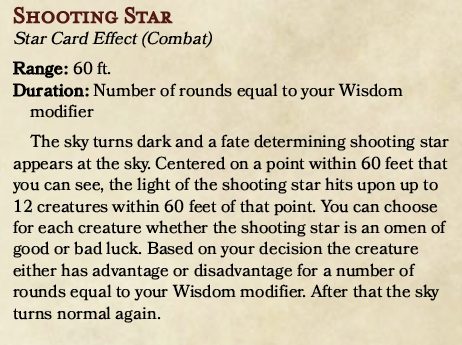
The effect within the battle is similar to a spell at a higher level. However, no spell levels are consumed for these effects. The Shooting Star grants either good luck or bad luck to up to 12 creatures at the Fate-Seeker’s choice. All creatures with good luck will receive an advantage on all throws for a number of rounds equal to the wisdom modifier of the Fate-Seeker, and all creatures with bad luck will receive a corresponding disadvantage.
Each of the major cards can be drawn twice per long rest. These are cards that can have a great influence and represent the core of the archetype, but are not intended to break the game because of their existence. But I also suspect that they mainly occur as reinforcement or combat effect. Who would not like to start a fight with the Shooting Star in their side deck ;-).
On 10.09.2020 the Fate-Seeker class will enter the stage on the DMs Guild, so feel free to drop by, leave your feedback here or on the DMs Guild and have fun!

